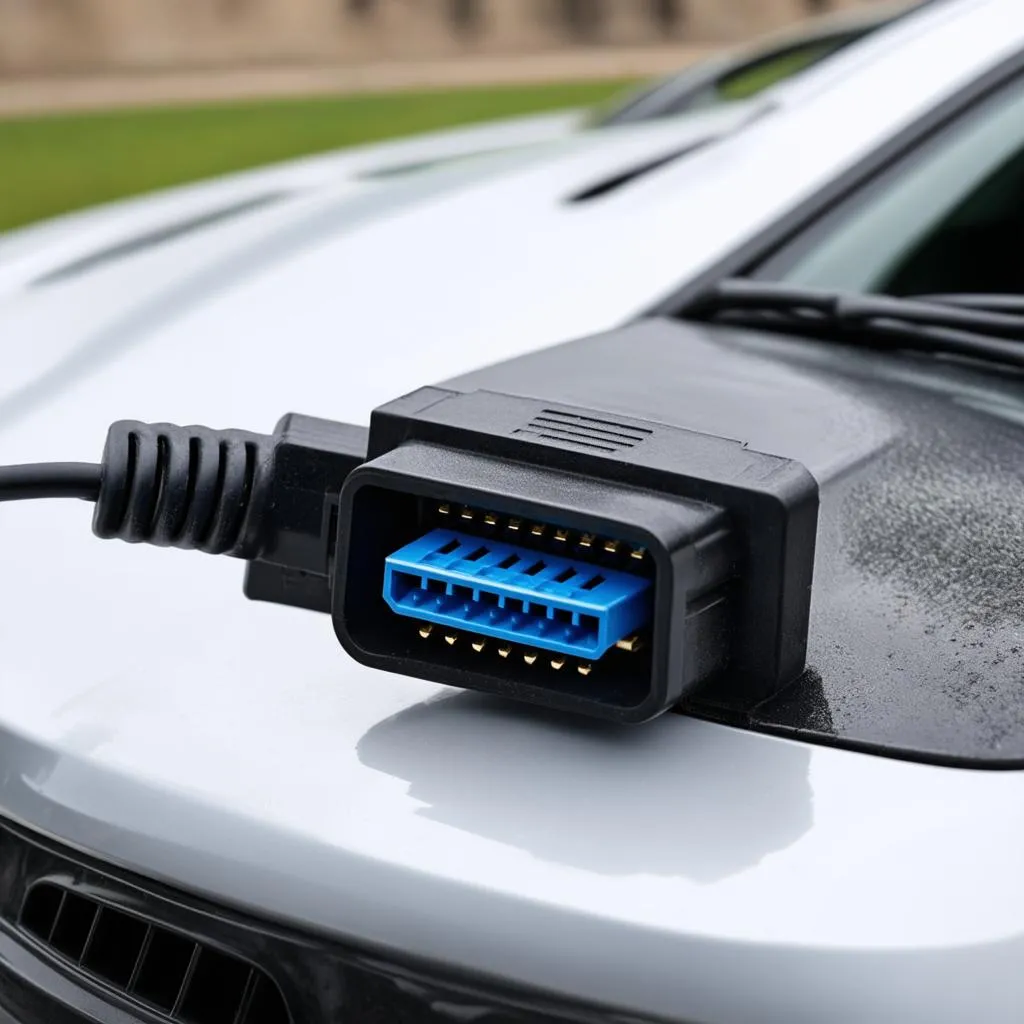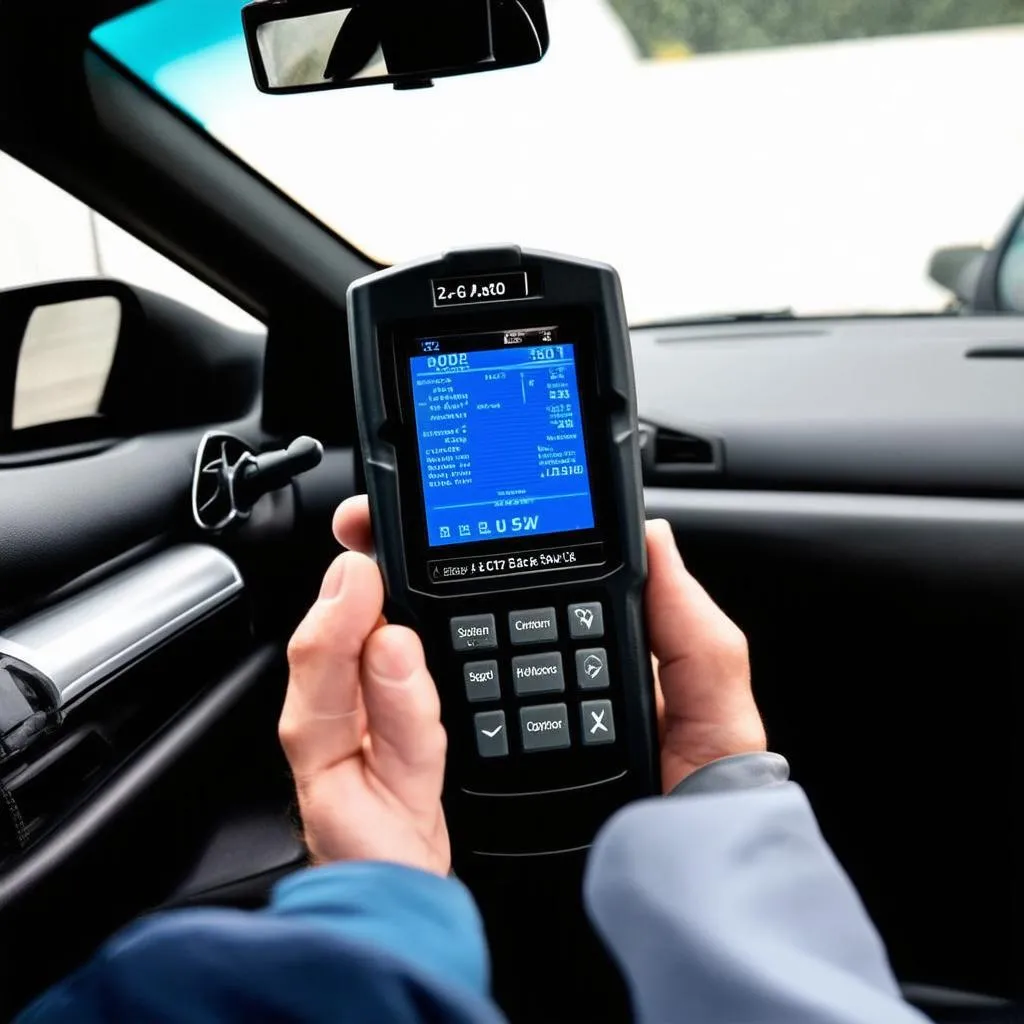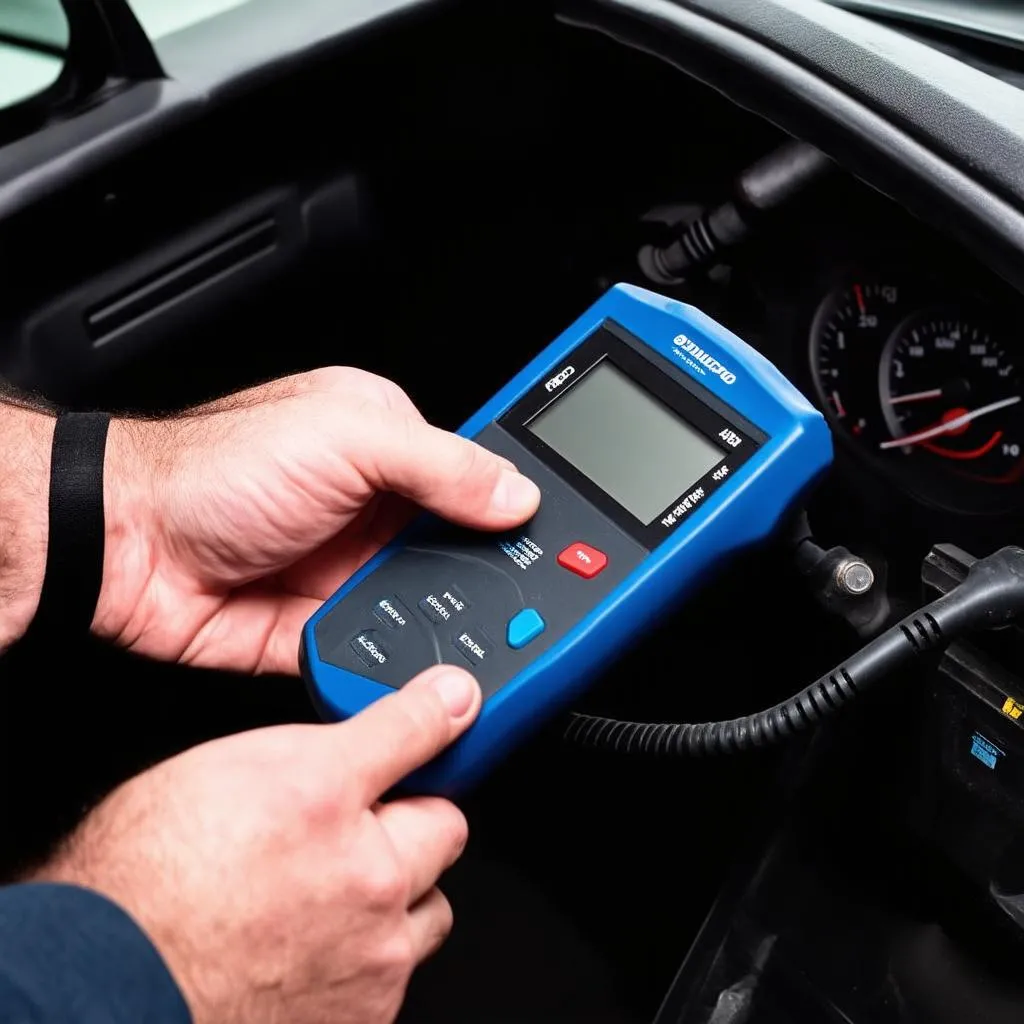They say “a problem shared is a problem halved”. That’s certainly true when it comes to car repairs, especially when you’re dealing with complex electronic systems. You’ve got a blinking dashboard light, a malfunctioning sensor, or maybe your engine just feels sluggish. The first step is often connecting a scan tool to the OBD-II data link connector, but what exactly does that involve? Don’t worry, we’re here to break it down for you.
What Does “Connect The Scan Tool To The Obd-ii Data Link Connector” Mean?
This question touches on a core principle of modern automotive diagnostics. You see, it’s like having a window into your car’s soul. The OBD-II data link connector (DLC) is a standardized port that connects your scan tool to your car’s computer, essentially allowing you to read its “thoughts” – its codes and data that reveal what’s going on beneath the hood.
The OBD-II system, introduced in 1996, revolutionized how we diagnose and repair vehicles. It made information accessible, empowering both professionals and DIY enthusiasts. Think of it as a bridge between the car and the world, facilitating communication and understanding.
Connecting the Scan Tool: A Detailed Guide
Let’s get down to the nitty-gritty:
Locate the OBD-II Data Link Connector (DLC)
The first thing you need to do is locate the DLC. This is usually located under the dashboard on the driver’s side, near the steering column. It’s often a 16-pin connector, often with a distinctive shape and color (often black or white).
Tip: You can consult your car’s owner’s manual for the exact location of the DLC.
Connect the Scan Tool
Once you’ve found the DLC, plug the scan tool into it. The connector on the scan tool will have a matching shape and size to the DLC. Push it in firmly until you hear a click.
Power On the Scan Tool
After connecting the scan tool to the DLC, power it on. You’ll usually need to press a power button or switch.
Select the Vehicle’s Make and Model
Most scan tools require you to select the vehicle’s make and model. This is usually done through a menu system.
Start the Scan
Once you’ve selected the correct vehicle information, you can start the scan. The scan tool will communicate with the vehicle’s computer and retrieve diagnostic codes and other data.
Interpret the Results
The scan tool will display the results of the scan. These might include diagnostic trouble codes (DTCs), live data, and other information that can help you diagnose the problem.
Common Questions
What is the OBD-II Data Link Connector (DLC)?
The OBD-II Data Link Connector is a standardized 16-pin connector that allows you to connect a scan tool to a vehicle’s computer.
Where is the OBD-II Data Link Connector located?
It’s usually located under the dashboard on the driver’s side, near the steering column.
What are the benefits of using a scan tool?
Using a scan tool can help you diagnose problems with your vehicle, reduce repair costs, and save time.
Frequently Asked Questions
- Is the OBD-II standard universal? Not entirely! While the connector itself is standardized, the specific codes and data transmitted can vary based on the vehicle’s make and model.
- How can I find the right scan tool for my car? Look for scan tools that are compatible with your vehicle’s make, model, and year.
- Do I need to be a mechanic to use a scan tool? Not at all! Many scan tools have user-friendly interfaces and come with guides to help you interpret the results.
Products to Consider
- Actron CP9670 Auto Scanner Trilingual OBD-II
- OBD Dash Lite
Car Brands Supported
- European Cars: The OBD-II system is widely used in European cars, ensuring compatibility with many scan tools.
- American Cars: The system has also been adopted by most American car manufacturers.
- Asian Cars: Many Asian car makers have adopted the OBD-II system.
Learn More
- What is OBD in Automotive? (https://techcarusa.com/what-is-obd-in-automotive/)
- 04 Civic OBD Live Data (https://techcarusa.com/04-civic-obd-live-data/)
- 95 Chrysler OBD-II Connector (https://techcarusa.com/95-chrysler-obd-ii-connector/)
Need Help?
If you’re still unsure about connecting the scan tool to your car, feel free to reach out! Our expert team is available 24/7 to answer your questions and guide you through the process. Contact us via Whatsapp: +84767531508.
 obd-ii-connector
obd-ii-connector
 scan-tool
scan-tool
 mechanic-using-scan-tool
mechanic-using-scan-tool
Conclusion
Connecting the scan tool to the OBD-II data link connector is a crucial step in understanding the health of your car. It’s like opening the door to a wealth of information that can help you diagnose problems quickly and efficiently. Don’t hesitate to reach out if you have any questions or need assistance. Let’s keep your car running smoothly!